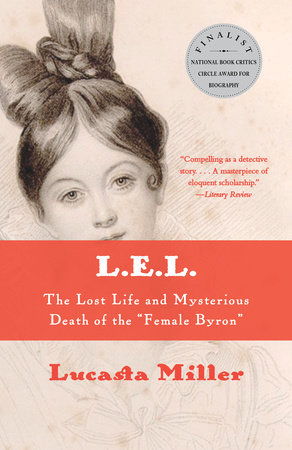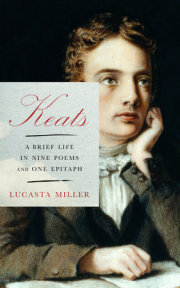Prologue Between 8 and 9 o’clock on the morning of Monday 15th October 1838, the body of a thirty-six-year-old Englishwoman, still in her nightclothes, was found on the floor of her dressing-room in Cape Coast Castle, West Africa. She was the new wife of the British Governor, George Maclean, and had arrived there from England only eight weeks previously.
Cape Coast Castle was the largest trading fort on the western coast of Africa: a stark white complex bristling with cannon, perched on the edge of the Atlantic Ocean in what is now Ghana. During the eighteenth century, it had been the “grand emporium” of the British slave trade. Countless captives had been held in its underground dungeons before precincts. Following the Abolition Act of 1807, the castle had remained under British command, its dungeons repurposed for housing local “prisoners.”
A soldier in the sentry box stood at the entrance to the governor’s quarters, which were decorated in the European style: prints on the walls, a shining mahogany dining table, impressive table silver. The room in which his wife’s body was found, painted a deep blue, featured a toilet table and the deceased’s own portable writing desk, one of those small wooden boxes, typical of the period, that opened to form a sloping writing surface.
Deaths from disease among Europeans in what was then known as the “white man’s grave” were not uncommon. Indeed, the fatality rate was so great that the local Methodist missionary was having difficulty recruiting volunteers. But this death was different. In the woman’s hand was a small empty bottle. Her eyes were open and abnormally dilated.
The last person to see the governor’s wife alive was her maid Emily Bailey, who had traveled out with her from England. She later testified that she had found Mrs Maclean “well” when she went in to see her earlier that morning. On her return half an hour later, Emily Bailey had had difficulty opening the door. It had been blocked by her mistress’s body.
Soon after Mrs Bailey raised the alarm, the castle surgeon arrived. He attempted to revive the patient, but in vain. Garbled news soon spread to the nearby hills. Brodie Cruickshank, a young Scottish merchants’ agent, arrived at the fort within the hour, mistakenly supposing that it was the governor himself who had perished. In his memoir
Eighteen Years on the Gold Coast of Africa, he later recalled his shock on entering the room where Mrs. Maclean’s body had been laid out on a bed. He had dined with the Macleans only the evening before, when she had appeared to be in “perfect health”. The governor himself was in the room. He had slid down into a chair and was silently staring into space, his face “crushed”.
Later that very day, an inquest was held at the castle, the jury hastily convened from among the local merchant community. No autopsy was performed, but the empty bottle was produced in evidence and its label carefully transcribed: “Acid Hydrocianicum Delatum, Pharm. Lond. 1836, Medium Dose Five Minims, being about one-third the strength of that in former use, prepared by Scheele’s proof.” The deceased was said to have been in the habit of using the contents, prussic acid in everyday parlance, for medicinal reasons, and to have taken too much by mistake. A verdict of accidental death was recorded.
After the inquest, the corpse was hastily interred under the parade ground. During the burial, a tropical shower burst from the sky in such torrents that a tarpaulin had to be erected over the gravediggers. By the time the final paving stone was replaced it had grown dark. The workmen finished the job by torchlight.
West Africa was so remote from England that it was not until the morning of January 1, 1839, that a discreet death notice appeared in
The Times:
At Cape Coast Castle, Africa, on Monday, the 15th of October last, suddenly, Mrs. L.E. Maclean, wife of George Maclean Esq., Governor of Cape Coast Castle.
But after the evening
Courier revealed the woman’s maiden name later that day, the story became headline news. She was one of the most famous writers in England: Letitia Elizabeth Landon, better known by her initials, “L.E.L.”
Copyright © 2019 by Lucasta Miller. All rights reserved. No part of this excerpt may be reproduced or reprinted without permission in writing from the publisher.








